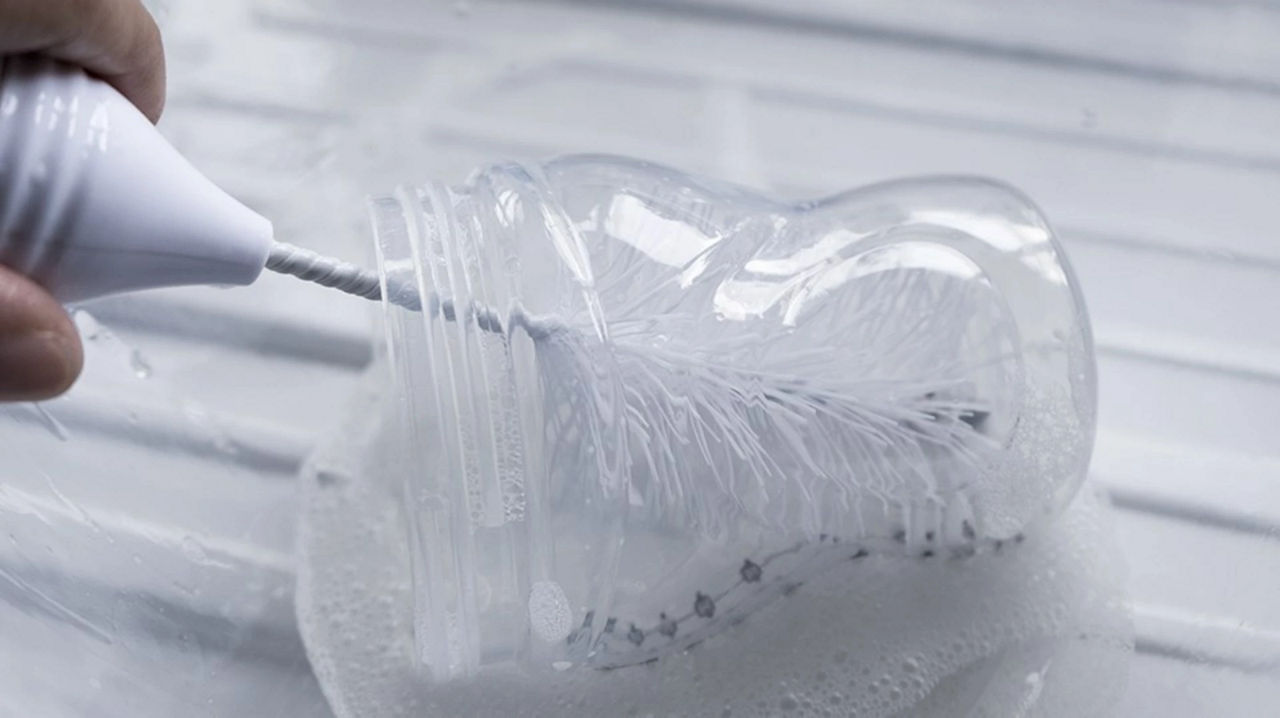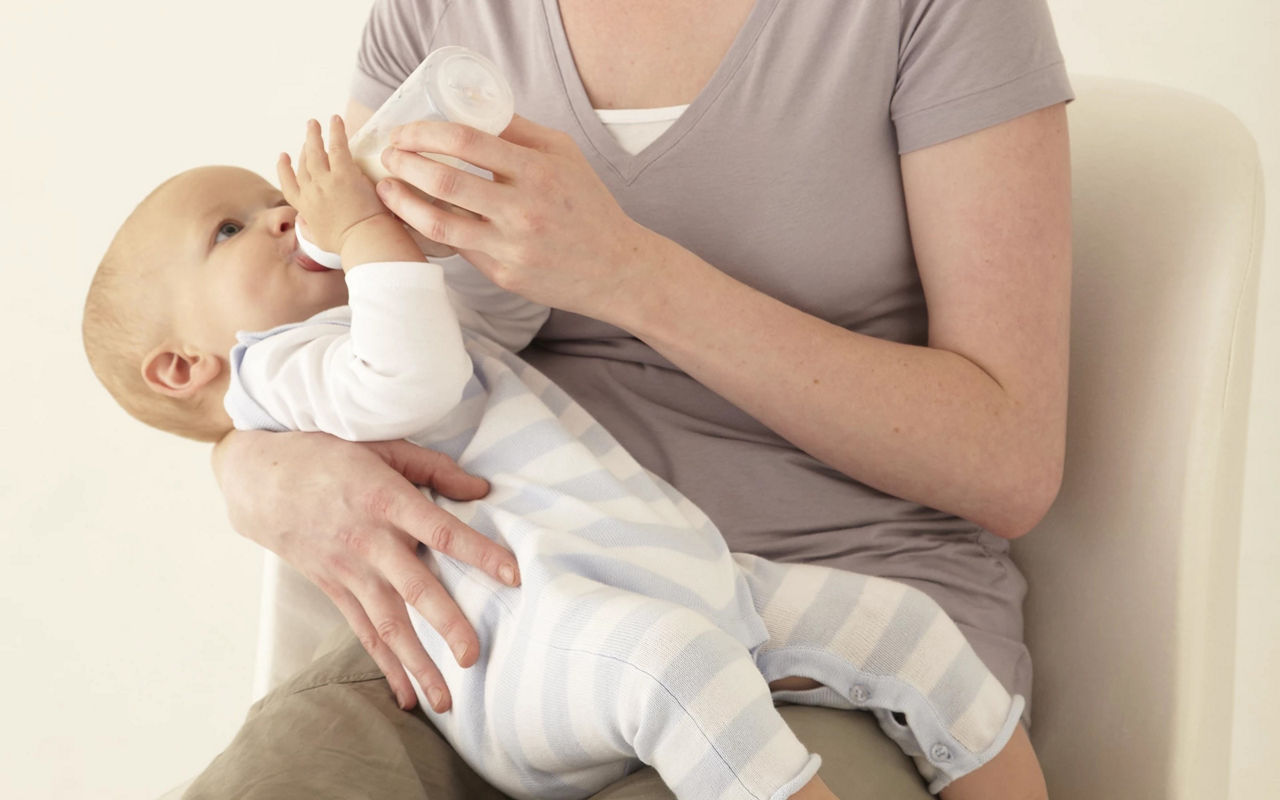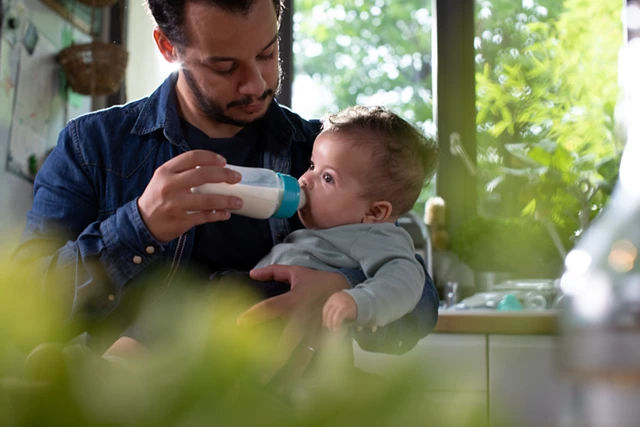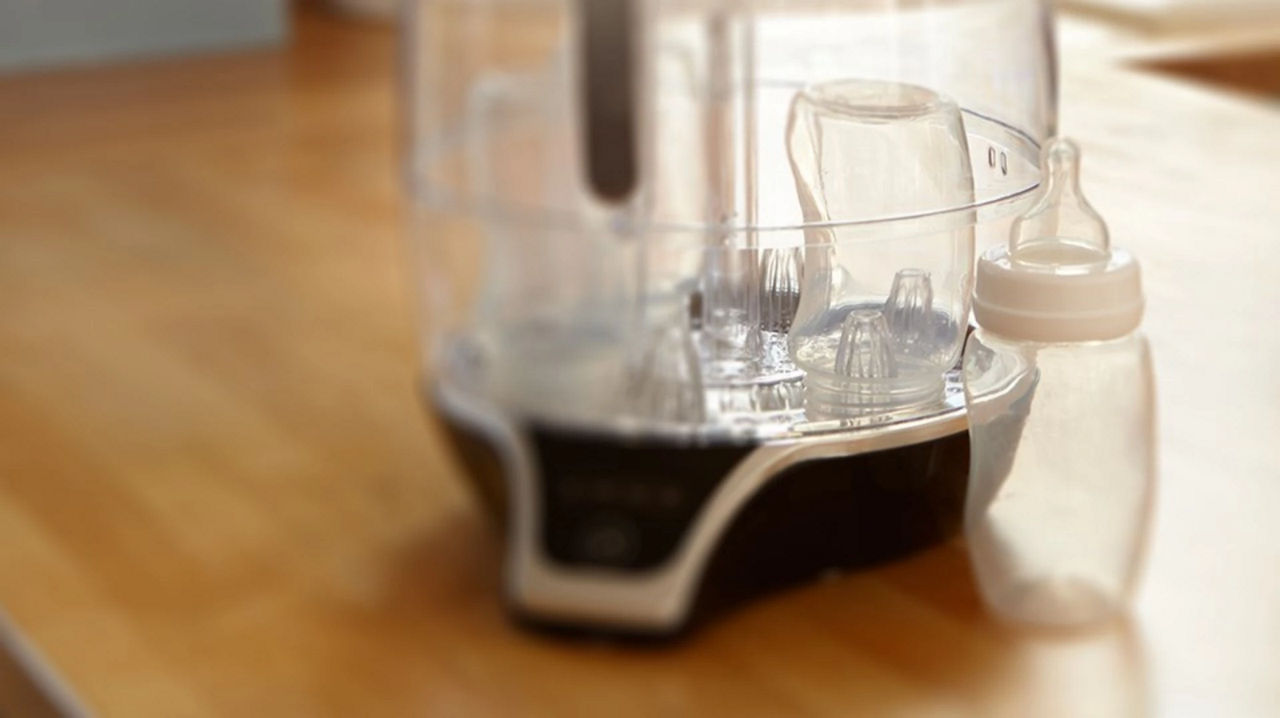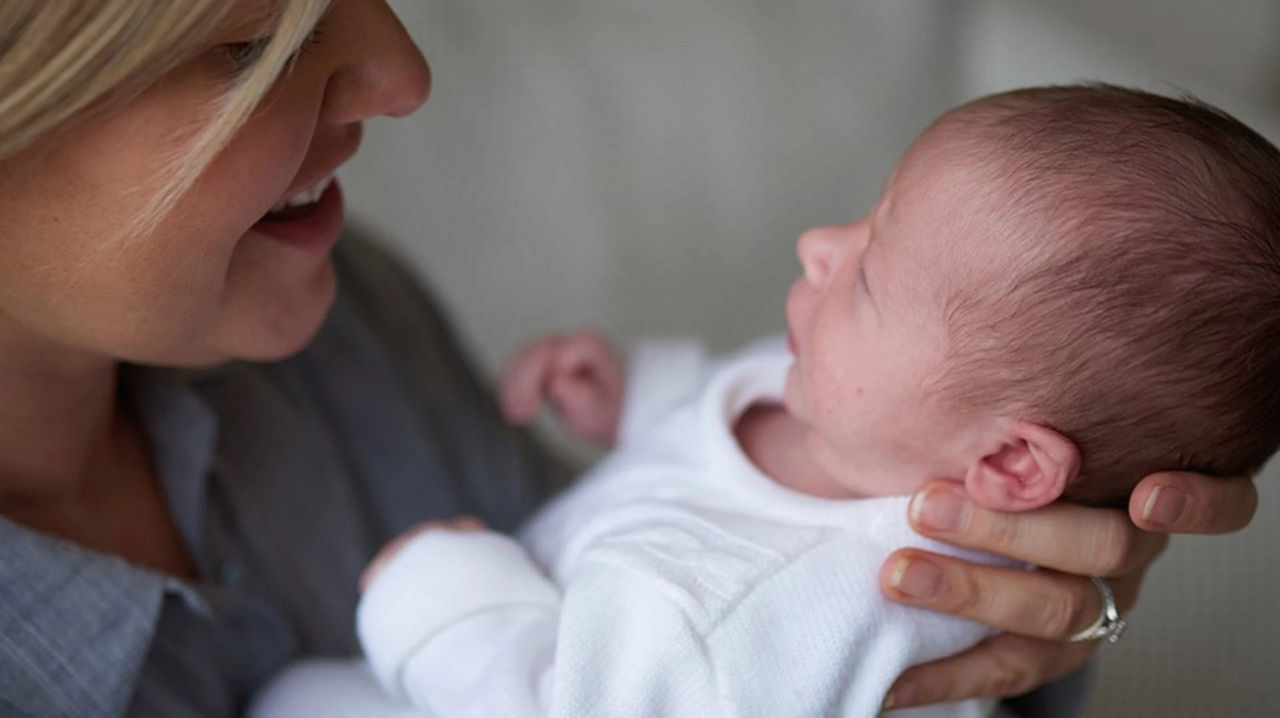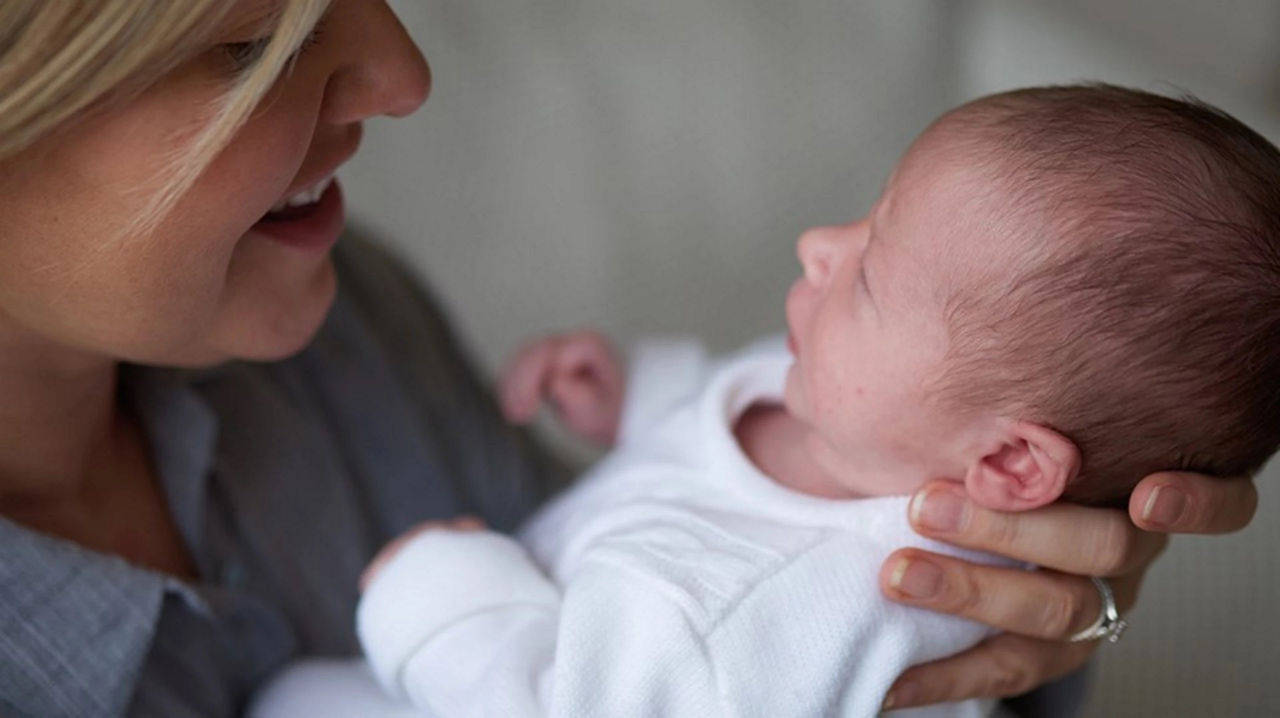Baby bottles come in two sizes:
- Small 120ml/4oz bottles, these are ideal for young babies and newborns
- Large 225ml/8oz bottles, suitable for older babies
They are available in three widths:
- Wide-neck, which are easier to clean and fill
- Regular
- Narrow-neck
Some makes of wide-neck bottle are specially designed to prevent your baby from taking in too much air, which can lead to wind and discomfort. An added advantage of a wide-neck is that they’re less messy when filling with formula or breast milk and easier to clean.
However, you may find that regular bottles are easier to find teats for, and are more likely to fit coolers and sterilisers. Narrow-neck bottles can also make it easier for your baby to learn to feed themselves as they’re easier for little hands to hold.
When choosing your baby’s bottle, it’s down to what you and your baby prefer.
